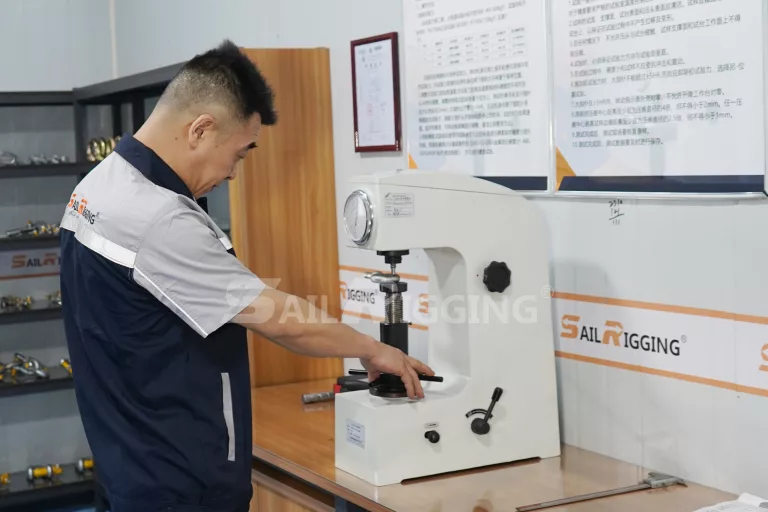In the realm of rigging hardware, ensuring the reliability and safety of components like eye bolts is paramount. One crucial method employed to assess the strength and durability of these components is the Rockwell hardness test. In this article, we will explore the importance of Rockwell hardness testing for eye bolts(DIN Eye Bolt, JIS Eye Bolt, US Type Eye Bolt, BS Type Eye Bolt, Deck Eye Plate), its aim, the testing procedure, and how to interpret the results to ensure optimal performance and safety.
The primary objective of Rockwell hardness testing for eye bolts is to measure the material’s resistance to penetration or indentation. This test provides valuable insights into the hardness of the material, which correlates directly with its strength and ability to withstand external forces. By assessing the hardness, manufacturers can ensure that the eye bolts meet specified standards and performance requirements.
Eye bolts are subjected to significant loads and stresses during lifting and rigging operations. A failure in these components can lead to catastrophic consequences, including property damage, injury, or loss of life. Rockwell hardness testing allows manufacturers to verify the integrity of the material used in eye bolts, ensuring they can withstand the intended loads without deformation or failure. This testing is essential for maintaining safety and reliability in critical applications.
The Rockwell hardness test involves applying a specific force to an indenter, typically a diamond or hardened steel ball, and measuring the depth of penetration into the material. For eye bolts, the test is typically performed on a representative sample of the product. The test is conducted according to standardized procedures, such as ASTM E18 or ISO 6508, to ensure consistency and accuracy.
The results of the Rockwell hardness test are expressed as a numerical value on the Rockwell scale, denoted by a letter (e.g., HRC, HRB). Higher values indicate greater hardness and, typically, greater strength. Manufacturers compare these values to specified standards or requirements to determine if the material meets the necessary criteria for use in eye bolts. Deviations from the expected hardness values may indicate inconsistencies in material quality or manufacturing processes, prompting further investigation or quality control measures.
Rockwell hardness testing plays a vital role in ensuring the safety and reliability of eye bolts used in rigging and lifting applications. By assessing the material’s hardness, manufacturers can verify its strength and durability, mitigating the risk of failure and enhancing overall safety. Understanding the significance of Rockwell hardness testing empowers stakeholders to make informed decisions regarding the selection and use of eye bolts, ultimately contributing to safer and more efficient operations in various industries. If you have any need about Rockwell Hardness Test, please feel free to contact Sail Rigging.





